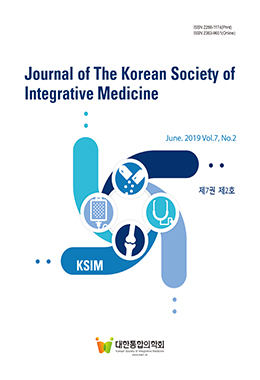Purpose : This study examined the effects of a virtual reality rehabilitation program on stroke patients’ upper extremity functions and activities of daily living (ADL).
Methods : The subjects were equally and randomly divided into an experimental group (n=16) to whom a virtual reality rehabilitation program was applied and a control group (n=16) who received traditional occupational therapy. The intervention was applied five times per week, 30 minutes per each time, for six weeks. Jebsen-Taylor hand function test was conducted and the subjects’ Manual Function Test was measured to examine their upper extremity functions before and after the treatment intervention, and a Korean version of modified Barthel index was calculated to look at their activities of daily living.
Results : After the intervention, the upper extremity functions and activities of daily living of the participants in both groups significantly improved (p< .05). However, the improvements in these parameters among the participants in the virtual reality rehabilitation program were significantly greater than those in the control group (p >.05).
Conclusion : The virtual reality rehabilitation program is a stable and reliable intervention method for enhancing the upper limb functions and activities of daily living of stroke patients.




